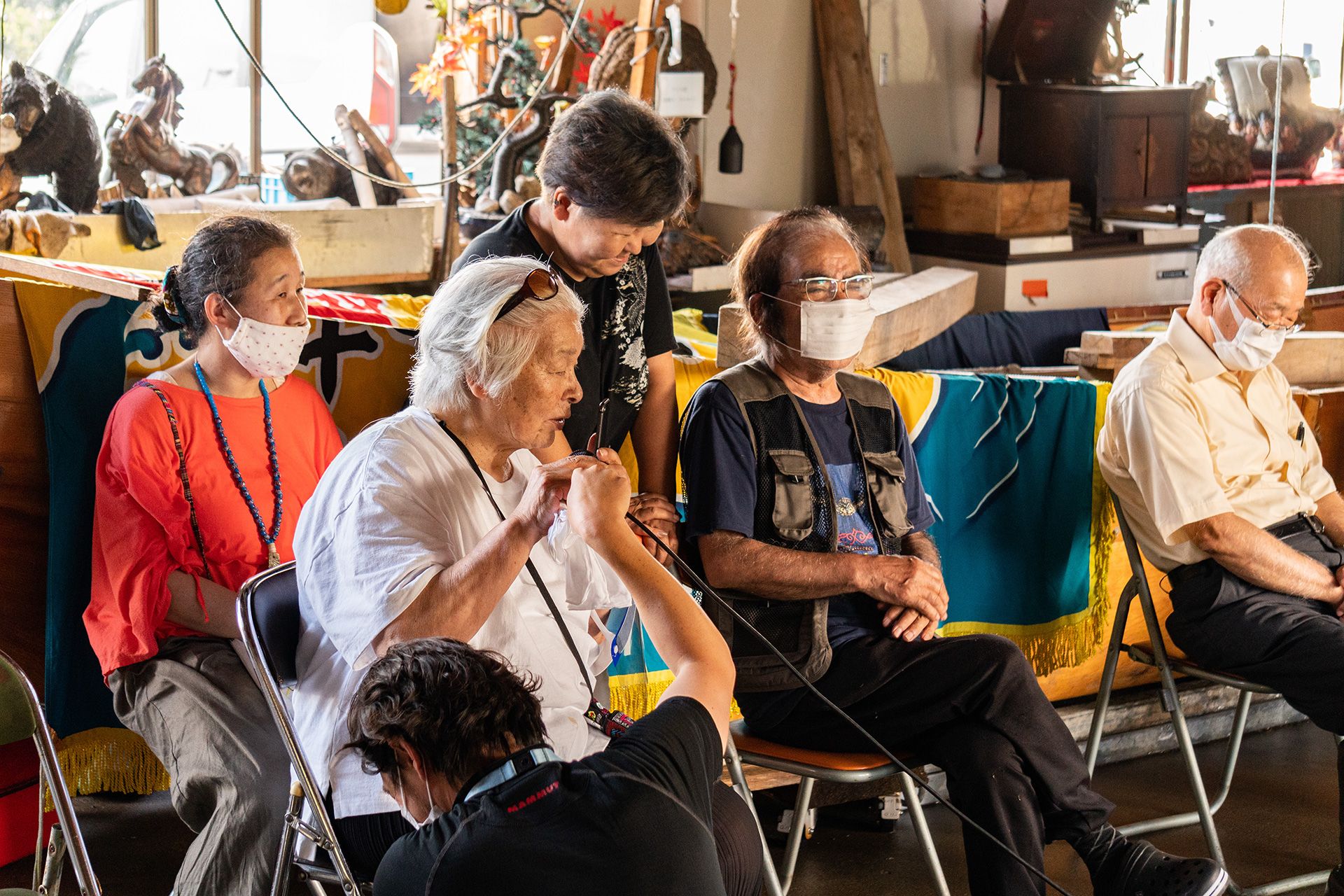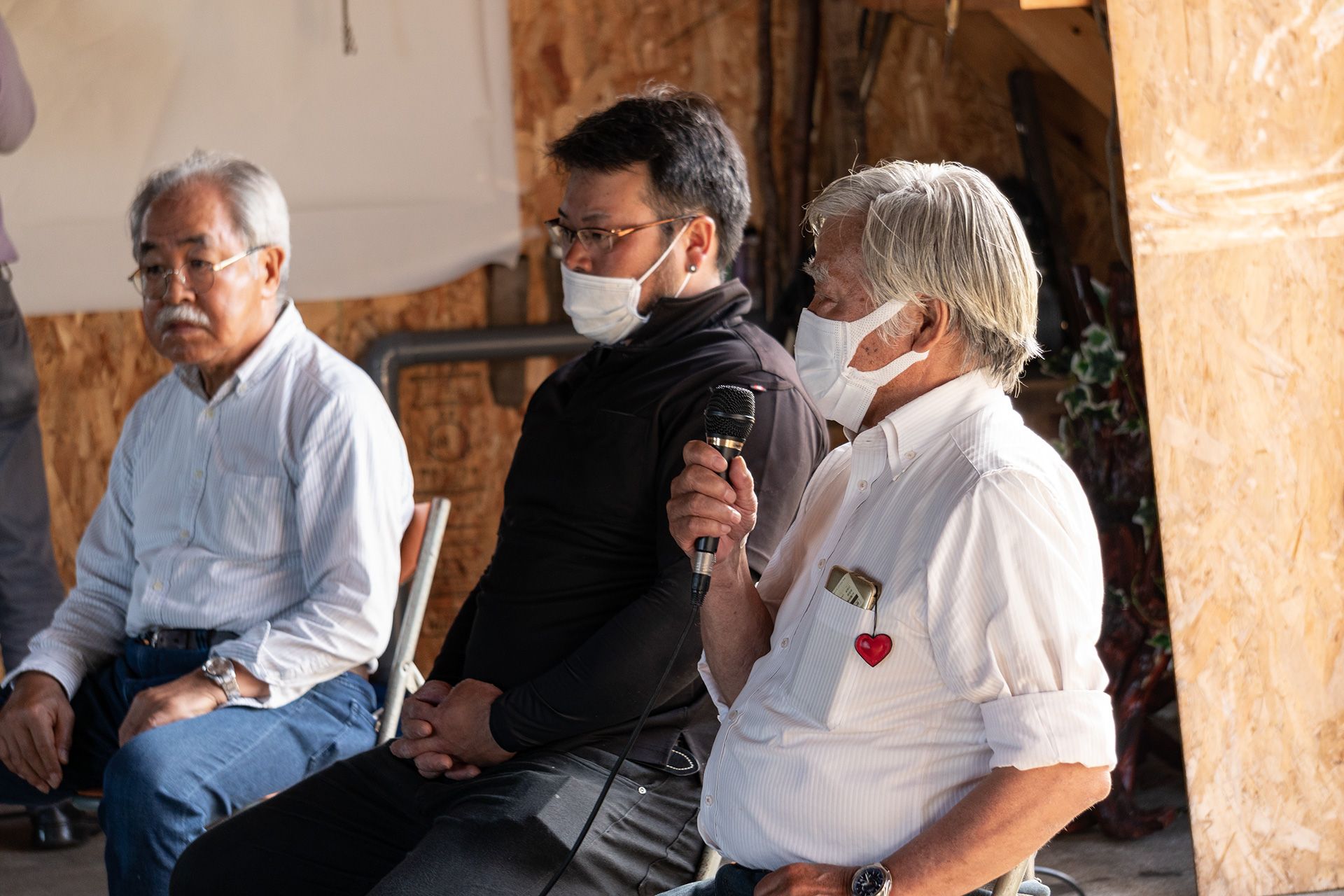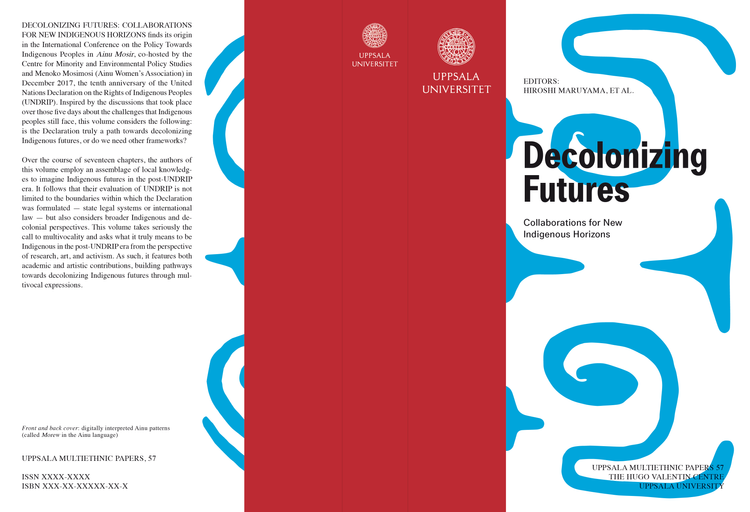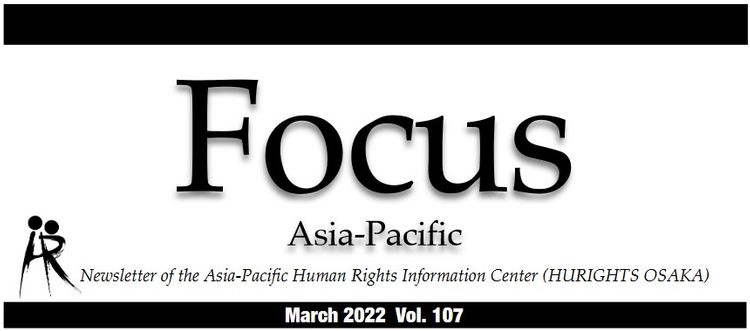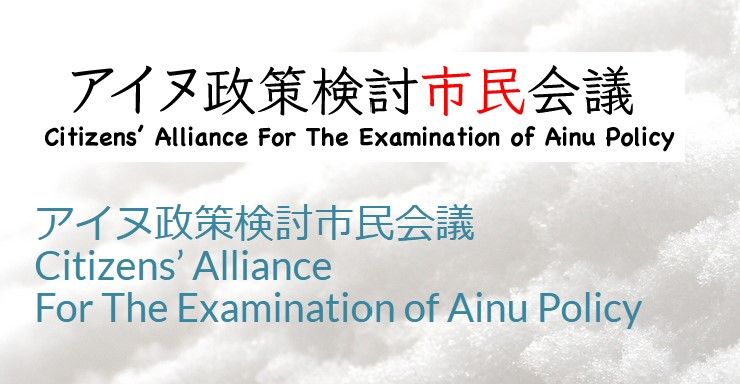Ainu Gather for Kamuycepnomi in Monbetsu
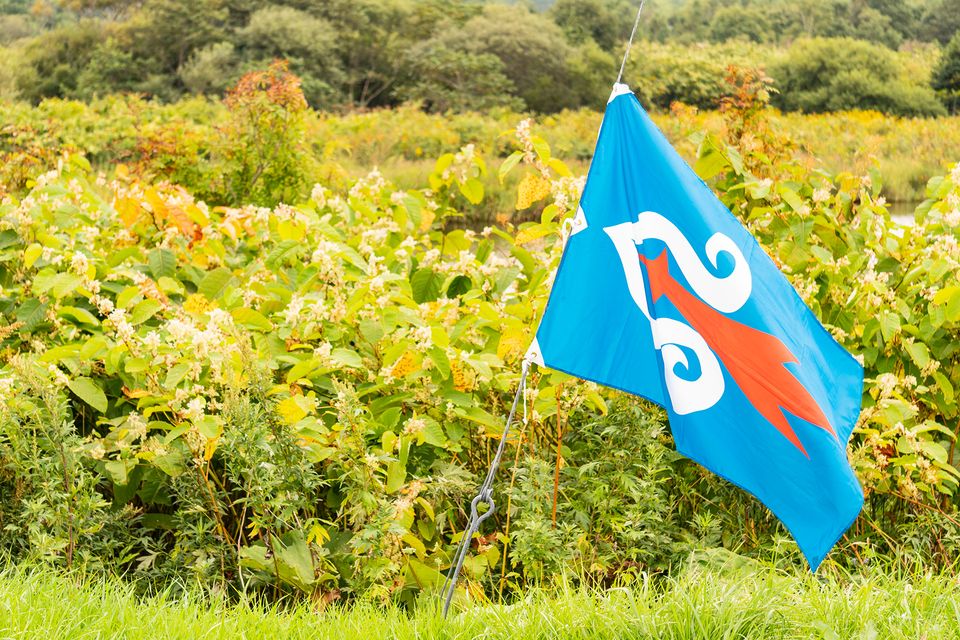
In this post, we review the events leading up to the ritual as well as some of the lessons discussed by Ainu activists.
On September 5th, CEMiPoS Director Hiroshi Maruyama and researcher Mashiyat Zaman traveled to Monbetsu, Hokkaido to film and support Kamuycepnomi, an Ainu ritual welcoming the return of salmon as they migrate upstream. Though observed every fall by Ainu communities throughout Hokkaido, in Monbetsu the ritual has become an act of resistance against the legacy of Japanese colonialism that the indigenous Ainu suffer today.
Under the Hokkaido Inland Water Fisheries Adjustment Regulation, salmon fishing in the Mobetsu River is restricted for all, including the Ainu, who may only fish for ritual purposes (and not daily subsistence, as they have for centuries) after applying for the Hokkaido governor's permission. During last year's celebration of Kamuycepnomi, revered Ainu leader (or ekasi in the Ainu language) Satoshi Hatakeyama of the Monbetsu Ainu Association, defying the Regulation's requirements as an infringement of the Ainu and his Indigenous rights, caught salmon from the Mobetsu River without permission. However, he was promptly reported to the police, who harassed and interrogated him over the course of days, and then denounced by Governor Suzuki Naomichi, who suggested that such treatment was the "unfortunate" consequence of Hatakeyama Ekasi's lack of cooperation.
The ceremony highlighted the Japanese government's halfhearted commitment to UNDRIP and other international agreements to guarantee the rights of Indigenous peoples, as the Hokkaido authority's response to Hatakeyama Ekasi's act of protest disparaged what was already a dubious promise to protect Ainu culture in Japan's revised (and widely criticized) Ainu Policy passed earlier that year.
This year's Kamuycepnomi, however, had to take place without Hatakeyama Ekasi, who has spent the last few months hospitalized while recovering from a stroke. Nevertheless, his presence and impact were palpable throughout the day. In the morning, we met outside his warehouse, a 10-minute walk from the mouth of the Mobetsu River. While two Ainu men Ponpe Ishii and Jun Nakagawa prepared ceremonial objects, Yukie Hatakeyama, the Ekasi's wife, collected the names and temperatures of guests, which included press from NHK, The Mainichi, Asahi Shimbun, Hokkaido Television Broadcasting, as well as local reporters, many of whom had written about last year's protest and the Ainu's fight for their rights.
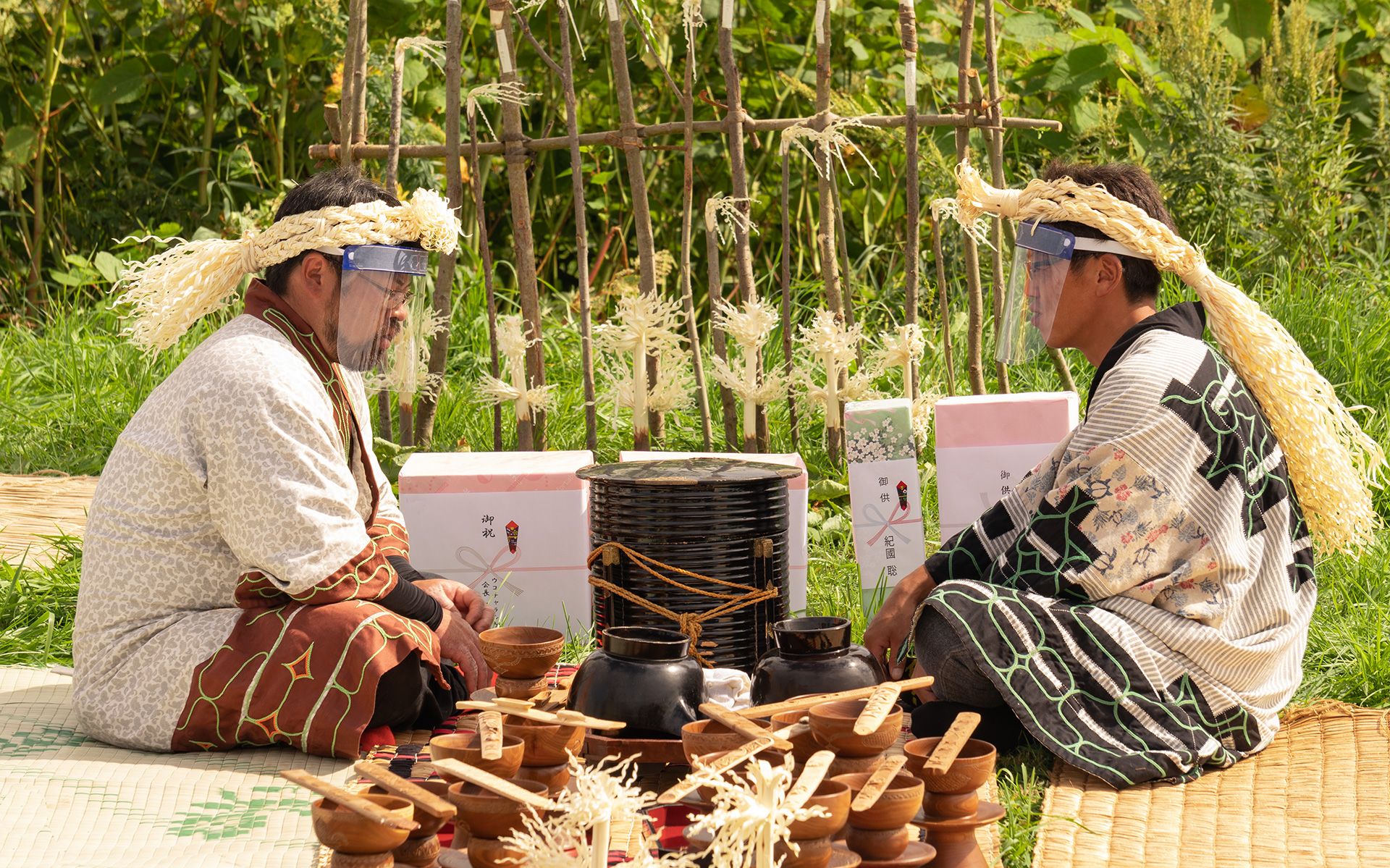
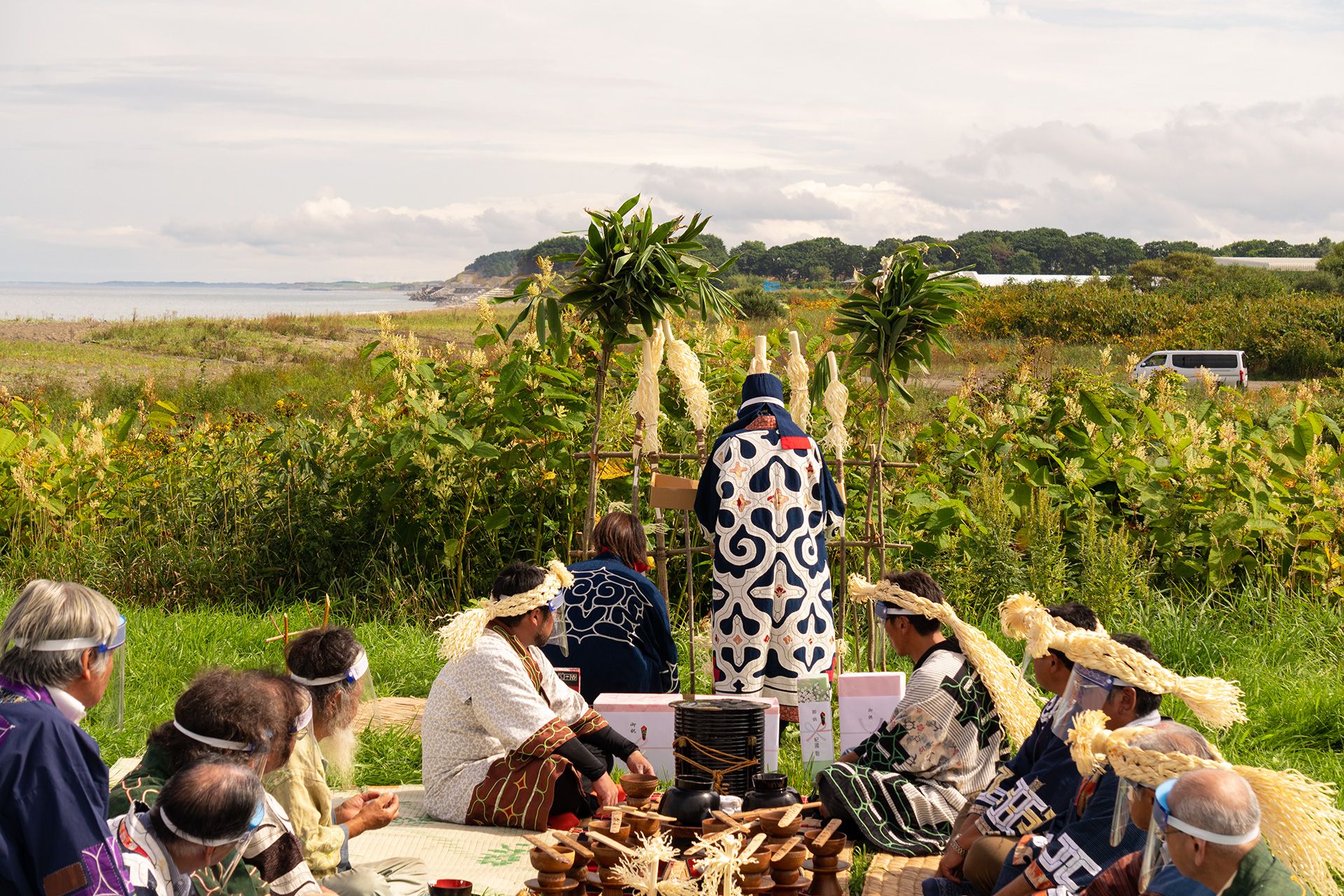
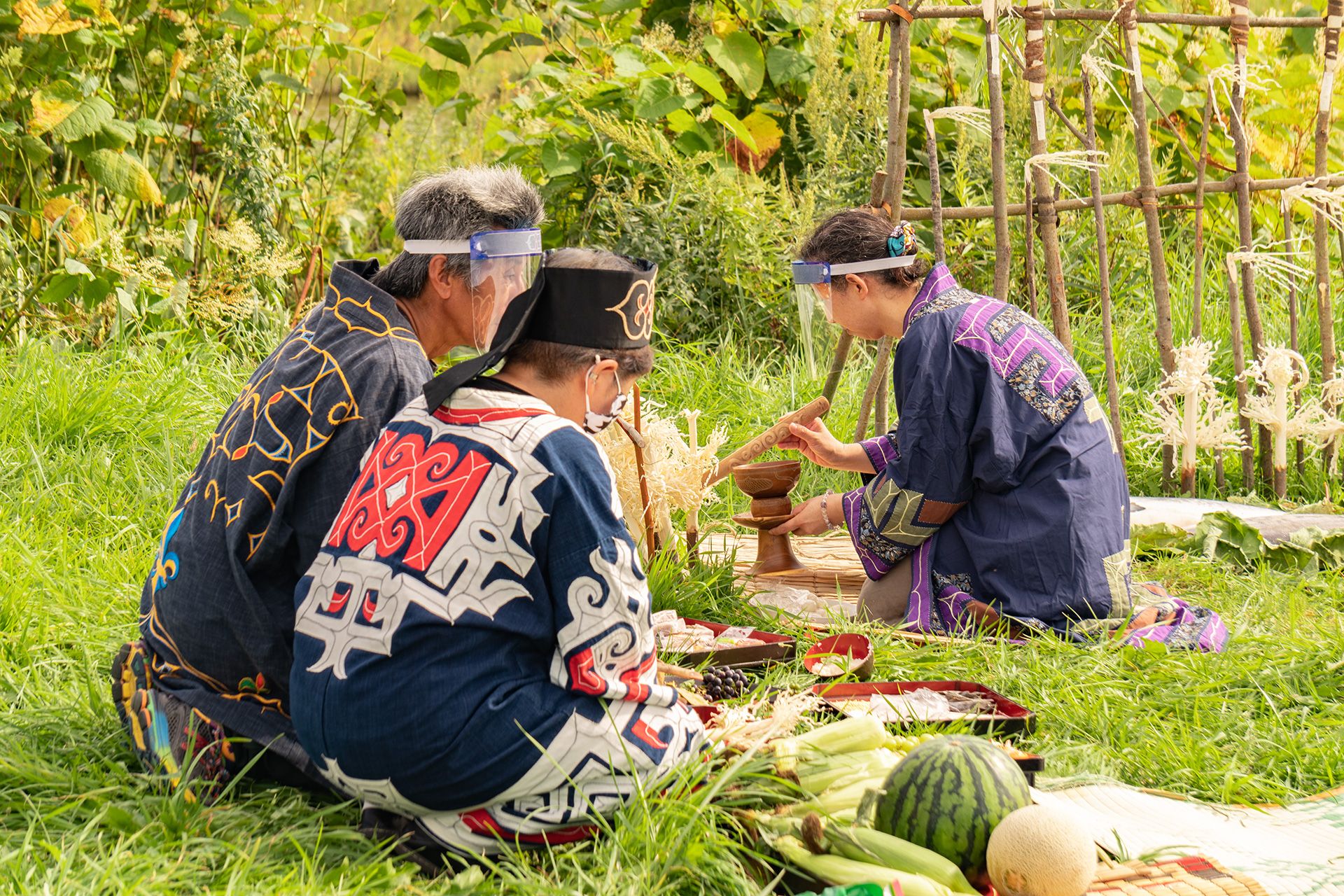

By noon, we had relocated to a bank overlooking the Mobetsu River while Ainu from other villages assembled, dressed in robes unique to their kotan. A banner tied to a utility pole read in Japanese, "Give the Ainu their land back. Give us our rights back," and beside it waved the Ainu flag. When all were gathered and ready, the ceremony began. This year, Ainu attending from Urahoro provided the salmon so that the Monbetsu Ainu Association could host Kamuycepnomi, representing the unity of Ainu beyond borders. An Ainu elder recited verses as two women carried a salmon each to the foot of an altar made of thin branches. Seated in front of the offerings, two men traced their hands along a large lacquered pot of tonoto, a traditional homemade sake, and passed small wooden bowls to the elders beside them. From the pot they filled two black vessels, which the two women used to pour tonoto into each wooden bowl. After more recitations, the elders approached the altar, adding its shavings into a small smoke pit at the center when they returned.
After the ceremony, we gathered again inside the Hatakeyama warehouse, where the Ainu participants and their guests sat in chairs arranged a circle. Using a mic and Yukie's cellphone set to speaker, everyone had a turn speaking with Hatakeyama Ekasi at the hospital, giving him their greetings and well-wishes. After the call ended, the floor was open for the Ainu to discuss plans for moving forward in the fight for their rights.

In attendance were Ainu from the Raporo Ainu Nation in Urahoro, who had recently filed a lawsuit against the central and Hokkaido governments demanding their right to fish and use natural resources to sustain their livelihood, just as their ancestors had before Japanese colonization. While the suit is the first to legally test the Ainu's rights since last year's law formally recognized them as Indigenous people, it is not the first time the Ainu have challenged the government in court. In 1993, two Ainu landowners Shigeru Kayano and Koichi Kaizawa filed a suit against the Hokkaido Land Expropriation Committee (HLEC), arguing that its approval of the seizure of Ainu land for the construction of a dam in Biratori denied them not only their constitutional right to property, but also their internationally recognized right to enjoy their culture. While the dam was built nevertheless, the Sapporo District Court found the HLEC's decision illegal on the grounds that the Ainu's rights to their culture, as Indigenous people, were protected by the Constitution.
Mr. Kaizawa himself, now well into his seventies, also participated in Kamuycepnomi and the subsequent roundtable. Addressing his fellow Ainu, he emphasized the importance of coming together in the fight against the Japanese government for their human and Indigenous rights. But he soberly admitted that the Ainu Association of Hokkaido may not be of much help. No longer the hub of mobilization and gathering it once was, he explained, the Association today can only reach as far as personal connections. Thus, he urged the younger generations of Ainu across Japan to come together and take the lead.
